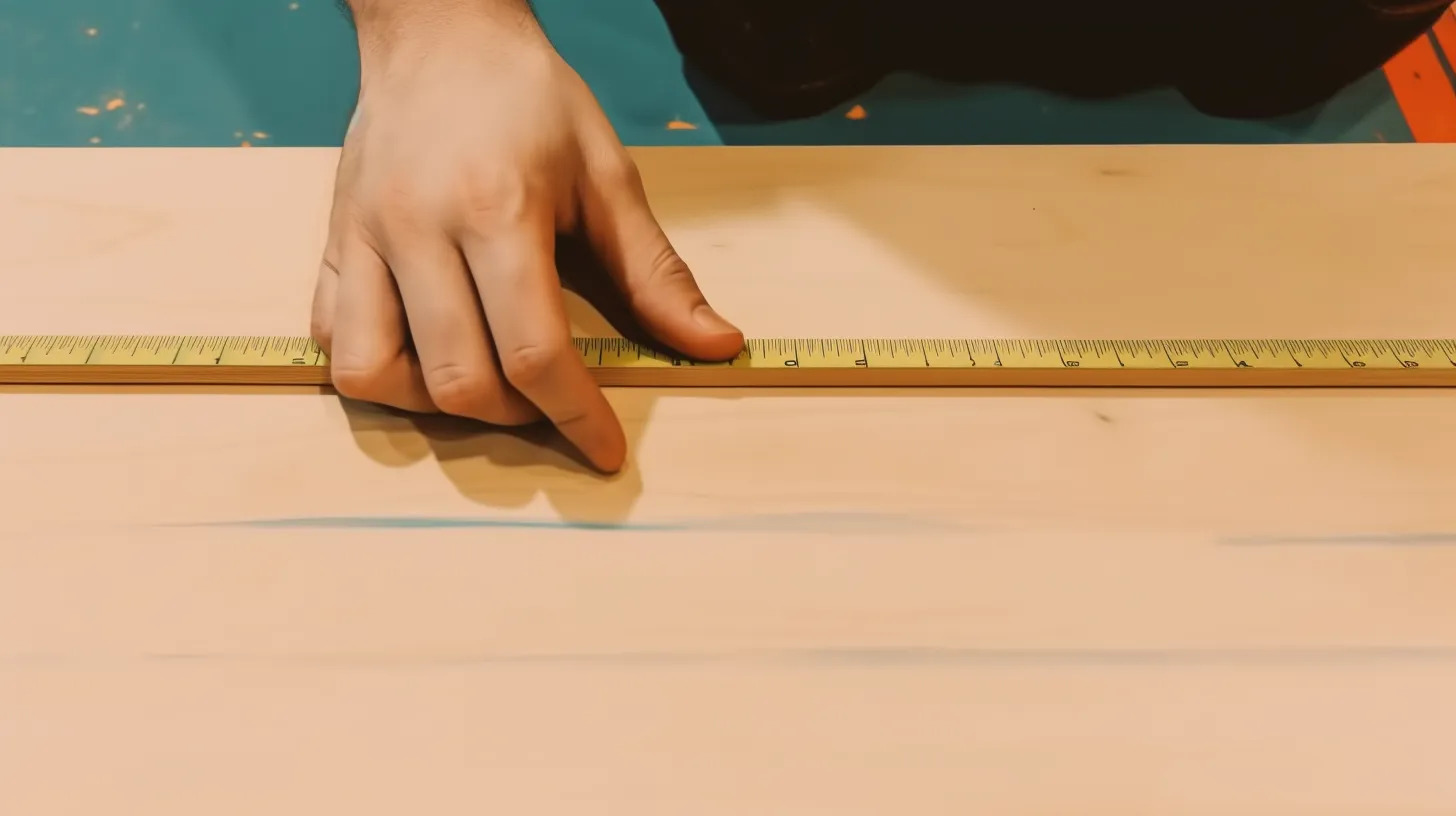
We are reader-supported. When you buy through links on our site, we may earn an affiliate commission.
A tape measure is a portable tool contractors use to measure the size or distance of objects. Accurate measurements are important in building a stable home or creating quality furniture. Units in a tape measure can either be imperial or metric. Find out how to read a tape measure and what to consider when choosing one.
Types of Tape Measures
Construction workers use either metric and imperial units to get the dimensions of objects. For instance, a sheet of plywood measures 8 x 4 feet or 2440 x 1220 millimeters.
Imperial tape measures read fractions, inches and feet. The widely used tape measure uses a metric scale with millimeters, centimeters and meters.
Metric Tape Measure
Most carpenters find it easier to work on numbers divisible by 10. It’s also simpler to convert millimeters to centimeters or meters when comparing three different units. In the metric system, 1000 millimeters equals 100 centimeters or 1 meter.
Reading a Metric Tape Measure in Centimeters
A metric tape measure often uses whole numbers, so adding, subtracting or dividing figures with different units is straightforward. For example, if a piece of wood has a length of 5 centimeters and a width of 8 millimeters, you can convert 8 millimeters to 0.8 centimeters. The numbers will have one unit for comparison.
One centimeter is equivalent to 10 millimeters, 2 centimeters is 20 millimeters and so on. You can find the units of a tape measure near the hook. Here, the bottom numbers use millimeter and centimeter units.
Each mark or part reads 1 millimeter, and 10 lines equal 10 millimeters or 1 centimeter. Similarly, 20 millimeters equates to 2 centimeters. The long line between two whole numbers reads half of a centimeter.
If you need to find 4.4 centimeters in the tape measure, locate 4 centimeters. To find the decimal unit, count four lines from 4 centimeters and that’s 4.4 centimeters. Alternatively, you can also convert 0.4 centimeters to millimeters, resulting in 4 millimeters. Since each line is 1 millimeter, counting four parts from 4 centimeters will give you 4 millimeters. Now, you have 4.4 centimeters.
Imperial Tape Measure
America is one of the three nations still using the imperial system. People measure things in inches and feet, such as an 8 x 4 feet plywood sheet. Even though the metric system is the standard in most countries, Americans have used the imperial scale longer.
Using an imperial tape measure is as easy as a metric tape measure. However, dealing with numbers can be challenging because it includes fractions. Examples are 1/2 inch and 1 3/4 inches. When recording sizes, you don’t write 0.5 inches or 1.75 inches.
Reading an Imperial Tape Measure in Inches
Each mark on an imperial tape is equivalent to 1/32 inch. It means 32 lines make up 1 inch. From 1 inch, the first mark is 1 1/32 inches, followed by 1 2/32 inches or 1 1/16 inches when converted, then 1 3/32 inches and so on.
The most extended vertical lines before the number represent a whole inch, so you have 1 inch and 2 inches. The second longest vertical line between two whole numbers reads half of an inch. The protruding lines on either side of it are 1/4 inch and 3/4 inch.
If you need to find 1 1/4 inches from the tape measure, count eight marks from 1 inch since 8/32 inch is equivalent to 1/4 inch.
Measuring Using a Tape Measure
After you’ve mastered reading a tape measure, you can take the dimensions of wood, pipes and other building materials.
Here are the steps on how to use a tape measure:
- Hook the end tab on a thing you want to measure.
- Pull out the tape until you reach the opposite end of the object.
- Push the thumb lock to secure the tape in place.
- Read the measurement.
- Mark your reading or write it on a piece of paper.
Tips for Using a Tape Measure
If you want to take precise measurements, follow these strategies.
- Keep the tape straight and flat on the object you’re measuring to get an accurate reading.
- If you’re marking a surface, write “v” instead of a straight line. The pointed part points to the measurement.
- After using the measuring tape, reel it in slowly. Slamming it back into the case ruins the slide on the hook.
Choosing the Right Tape Measure
All types of measuring tapes do one thing — measure. But brands come with different blade coatings and casings. Some feature both metric and imperial units. Inches on top of the blade and centimeters on the bottom.
Which one should you pick? It depends on what units you’re comfortable to use. Some people may find it convenient to work on lengths and widths in centimeters, while you may find inches easier.
When choosing a tool, consider where you will use it. Will you use it for simple home projects to measure furniture or an area you wish to renovate? If so, one with a plastic case can do the job. This type often has centimeters and inches readings.
If you’re an engineer or work in construction, invest in a tape measure with a metal case or rubber body. These kinds don’t break even if they’re dropped from a height.
For professionals, look for four things when shopping for your tool.
- Larger standout: Standout is the longest and straightest reach of a tape measure before it bends or snaps. Choose one with a larger standout ideal for measuring long distances and tall objects.
- Robust housing: Pick one with a metal or rubber case with a shock-proof feature for long-term use.
- Protective blade coating: There are nylon, matt polyester lacquer, fiberglass and stainless steel coatings resistant to corrosion, moisture and solvents.
- Replaceable blade: If you want to save money, buy a tape measure with a replaceable blade. If it starts to rust, you can change it.
Learning How To Read a Tape Measure the Right Way
Reading a tape measure in centimeters or inches is easy. You don’t have to be a genius in numbers to get accurate readings. The challenging part is converting different units, such as inches and centimeters, to the same unit so you can compare sizes.
When choosing a tape measure, consider its purpose. A plastic case tape measure is good enough if you plan to do DIY home projects. Otherwise, pick a tape measure with better features, such as corrosion-resistant blade coating for professional use.










